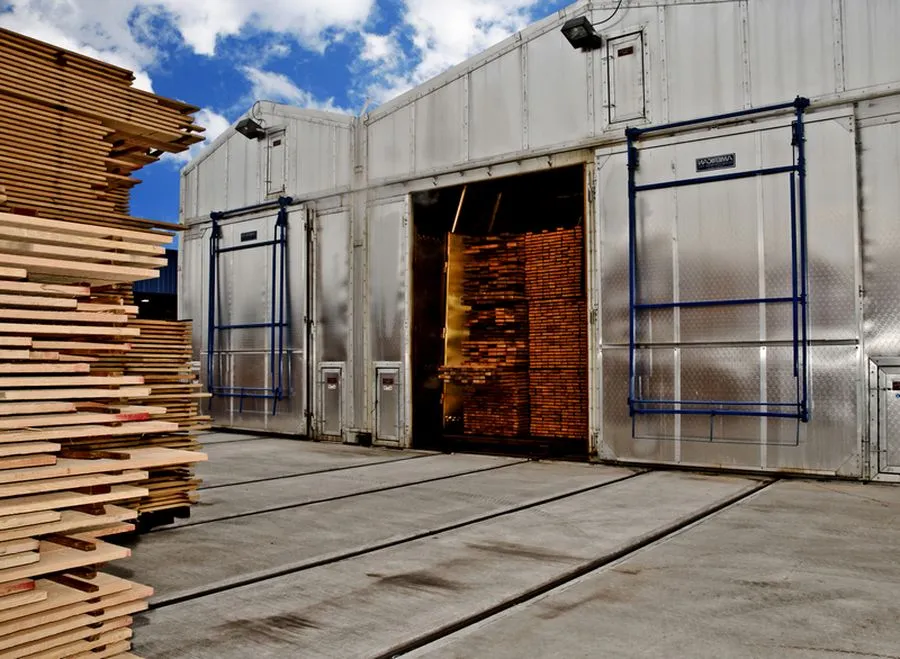
A kiln dryer for wood, often referred to simply as a wood kiln, is a specialised piece of equipment used to reduce the moisture content of wood through a controlled drying process. The primary purpose of a wood kiln is to enhance the quality and usability of wood by reducing its moisture content to a level suitable for various applications in the lumber and woodworking industries.
Wood kiln works by controlling the temperature, humidity, and airflow within an enclosed chamber to remove moisture from wood in a controlled and efficient manner. The process of kiln drying involves several steps:
- Loading: Wood is loaded into the kiln. The wood is typically stacked on specially designed racks or carts to allow for proper airflow throughout the chamber. Care is taken to ensure the wood is stacked evenly and does not block the airflow.
- Initial Conditioning: The kiln may undergo an initial conditioning phase before the drying process begins. This phase gradually raises the temperature and humidity levels inside the kiln to prepare the wood for drying. It helps to prevent surface checking or cracking.
- Drying Phase:
- Heating: The kiln’s heating system, which can be electric, gas, or steam-based, is activated. Heat is introduced to increase the temperature inside the kiln. The heat source raises the air temperature, which evaporates the moisture in the wood.
- Humidity Control: The kiln controls the humidity by regulating the airflow and sometimes by introducing steam. Controlling humidity is crucial because it prevents rapid drying, which could lead to stress and defects in the wood.
- Air Circulation: Fans or blowers ensure air circulates evenly throughout the kiln. Proper air circulation helps maintain consistent drying conditions and prevents moisture from getting trapped in the wood.
- Monitoring and Control: The kiln has sensors and a control system that constantly monitors temperature, humidity, and wood moisture content. The control system adjusts these parameters to achieve the desired drying results.
- Final Conditioning: Toward the end of the drying process, the kiln conditions the wood again, gradually reducing the temperature and humidity to minimise the risk of defects like case hardening (surface drying) or checking.
- Unloading: Once the wood has reached the desired moisture content (usually around 6-14% for most applications), it is ready for unloading. Care is taken to prevent rapid reabsorption of moisture when the wood is exposed to the surrounding environment.
Kiln drying is a critical step in the lumber and woodworking industry to produce high-quality, stable wood products. It allows for greater precision and consistency compared to air drying and is essential for many applications where wood needs to maintain its shape and structural integrity.
At Lira, we pride ourselves on manufacturing the highest quality production with the highest moisture content standards. If you want more information about our products or services, please do not hesitate to contact us. You can reach us by phone, email or through our website. Our team of experts is always ready to answer your questions and provide the necessary assistance.
We look forward to hearing from you soon!

